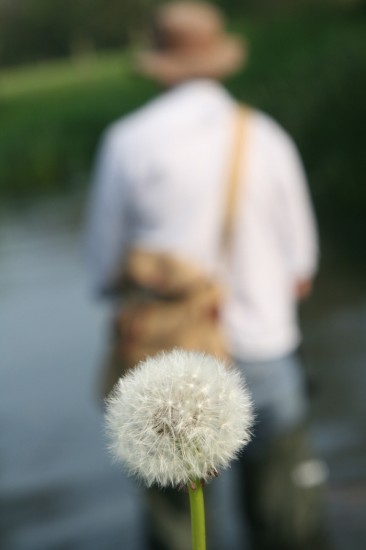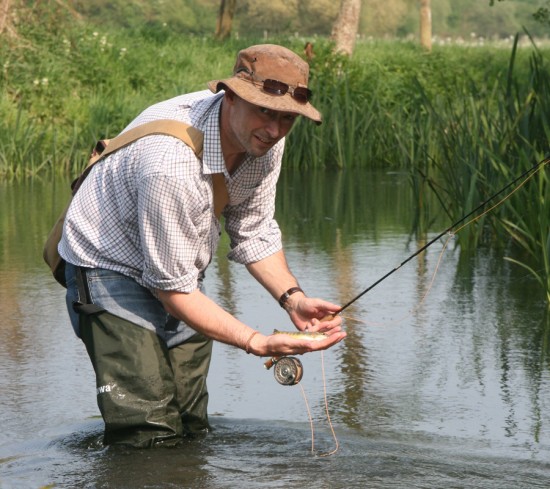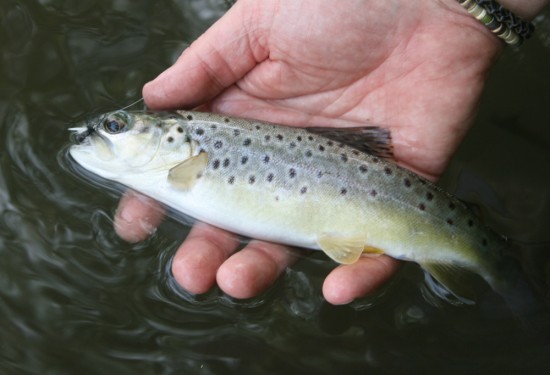May:
On April 24th, the first mayflies of the new season – the long-tailed yellow and olive ones – began to lift off the surface of the river and hover their way in to the trees. I was fishing a Gloucestershire chalkstream with a friend at the time and the hatch was small, but it was there. The mays were outnumbered by the hawthorns and olives (to use the language of fishermen, rather than scientists) and the trout weren’t especially interested in eating them but it was, for my companion and me, a sign of things to come.
The precise moment when these hatches begin is unpredictable – anywhere between late March and June is considered normal in the quaintly flexible calendar of the trout angler. When it does, it offers a natural, unassailable assurance that summer is on its way.
In four weeks time the mays will be coming off the water in vast squadrons and will, as always, remind me of the Wagner scene in Apocalypse Now. The usually-cautious trout will spiral from the depths and attack them with abandon, leaping from the water to gulp the annual candy. The fishermen will tie on their largest, gaudiest flies and they will fare well – but the fish will fare better.
But for now, the trout are smarter, fussier and leaner. I’ve been on three rivers so far this season and on each, the small wild browns have known exactly what they wanted. From morning until mid-afternoon, hawthorn flies have elicited a take or two, but only if the drift has been good and the leader fine. Later, the fish have demanded small black gnats or olives – rarely both. The first cool hour of evening has brought on the sedges, skittering in the faster water where a few trout have enjoyed a late supper. And throughout it all, clumsy casts or poor fly choices have brought silence to pools where the fish had risen freely only moments before.
It has been difficult. I have caught some trout, missed far more, and gradually rediscovered the rhythm of it all – something that I lose through neglect every winter.
The finest description of this rhythm was written many years ago, by Norman Maclean. He was taught to cast by his Presbyterian father on the banks of an American freestone river, in the days when all rods were made of bamboo. To the benefit of us all, Maclean later committed these lessons to paper in A River Runs Through It. I have read his words many times and every Spring when I bungle my way through the first casts of the new season the same phrase reappears in my memory – man by nature is a damn mess.
Ian came with me for one day. He is a good fly fishermen, the kind who walks on to a beat of river with a waistcoat full of tricks and the confidence to cast well from the off. He understands hatches and spends less time rummaging blindly for inspiration in his fly box than I do, too. We were on a tributary of the Bristol Avon, high in its upper reaches where the pools are narrow and the streamer weed prolific. Much of the water is beneath a canopy of trees and casting room is at a premium. It’s all short flicks, close wading and creeping around on increasingly creaky knees. There are stretches that are more open, where conventional, tangle-free fly fishing can take place – but the trout seem to prefer the nooks and crannies and so that was where we needed to fish.
I was using a borrowed rod – a four-weight carbon-fibre seven footer for the technically-minded – and at first it wouldn’t do as it was asked. Leaders refused to turn over, flies would miss the water and land instead in bushes, impossibly complex tangles would materialise from nowhere. I was struggling, and the rod’s owner was a pool behind me and could see it all. I offered a few muttered excuses – my preference for bamboo, the rod’s fast American action, a barely-perceptible cross-wind – everything but my own incompetence. The owner wasn’t fooled. ‘Slow it all down’, he kept saying. I could hear Maclean’s father saying it too and when I finally listened, I began to catch fish.
We followed the river for half-a-mile, swishing our lines with varying degrees of artfulness and spooking a few wary trout that rose in open water. Two tiddlers succumbed to my glitzy hawthorn fly and it was only when we reached a gently curving glide that it all came right. I began to cast shorter, aiming above the water rather than on to it. The fly began to land gently in the surface film and, for one tantalising hour, the trout went crazy.
The trout were small and were as wild as could be expected. Twenty seasons ago, industrial spillage wiped every fin from the water and the controlling club had to bring life back to the river with fish farm stockies. Thankfully they have prospered and those we caught were born in its shallows. Most were six or seven inches long, a few were closer to twelve, and all of them wore the reds and purples and blacks of native fish. They rose freely and, because we were using barbless hooks, we were able to guide them gently in to wet hands and return them a moment later. Most never left the water.
We were permitted to take a fish if we wanted to, but it didn’t cross our minds that day. It wasn’t a conscious decision. We both like to eat fish, wild ones especially, but the first days of the season are not about bounty or harvest. When the mayfly hatch is at its peak the trout will be fat and a bigger one will find itself wrapped in silver foil and cooked by the side of the river, but not yet. In the early weeks of a new summer, just being there and rediscovering the rhythm is more than enough.


